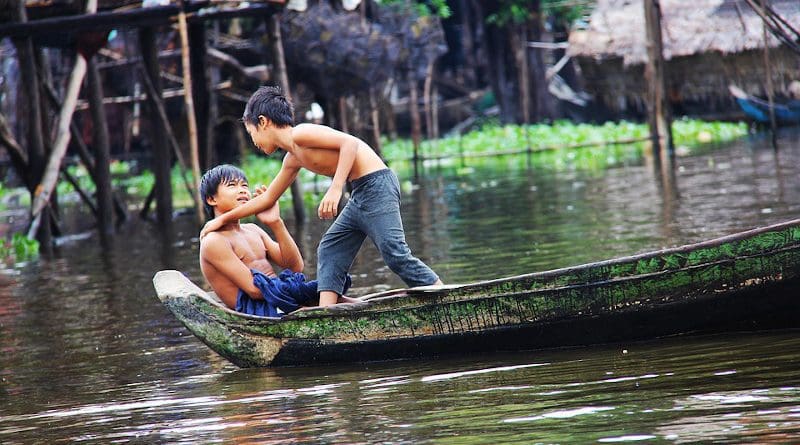Protect The Sea, Neglect The People? Large-Scale Impact Of Marine Conservation Schemes
Governments and international organisations are expanding targets to conserve marine spaces to stem the worrying depletion of biodiversity and fish stocks around the globe. A new study now demonstrates the wide range of unintended impacts that such conservation efforts have on affected communities.
Published in the leading international development journal World Development, the research presents a ground-breaking case study of the Cambodian Koh Sdach Archipelago combined with a cross-country statistical analysis of the impacts of marine conservation across Southeast Asian communities:
- The detailed and up-close analysis demonstrates a mix of positive and negative impacts:
- On the positive side, communities can find economic relief from the slowing deterioration of fish stock, and, in the case of Cambodia as a post-conflict country even experience improving relationships with the state.
- Negative consequences included social division, heightened livelihood anxiety, and a false sense of economic security.
- On balance and at the regional scale of Southeast Asia, long-term community exposure to marine protection schemes was linked to decreasing wealth and increasing child mortality.
Current research on surrounding marine protected areas (MPAs) has focused on pragmatic questions of effectiveness in protecting marine resources, good governance, and compliance. There has been little work to date on the “human dimension” of marine conservation and its unintended socio-economic consequences.
To evaluate the impact of marine conservation schemes on affected communities the researchers adapted techniques from international development research, developing a conceptual framework and using a qualitative case study of marine protection in Cambodia in combination with secondary household survey data from across Southeast Asia to tackle this research gap.
The case study revealed that although there had been some positive outcomes from the creation of the Koh Sdach community fishery organisation, such as slowing the deterioration of marine resources and encouraging diversification towards tourism, there were also negative social consequences – some groups remained involuntarily excluded, others evaded participation and adherence with its rules, and yet others struggled with the consequences of rule enforcement including threats of personal harm.
The quantitative analysis found that MPAs across Cambodia, Philippines, and Timor-Leste tended to emerge initially in socio-economically relatively well-off communities, but prolonged exposure was associated with a slower development pace in terms of household wealth, education, and child mortality.
The authors therefore argue that the target-driven expansion of marine protection areas – now up to 50% of global marine areas – neglects the social realities and livelihoods of affected communities.
The researchers recommend that the environmental objectives of marine protection be supplemented by social impact analyses and livelihood support schemes that help alleviate the disruptions of community lives.
Lead author Dr Haenssgen comments, “The importance of ecological impacts of marine conservation is beyond dispute, but we also need to ensure that such interventions are socially sustainable.
“What makes our study special in this respect is our use of cutting-edge social research approaches, both conceptual and methodological, which help unravel the social dimensions of marine protection on the micro and macro levels.”
The social research study comprised a team of University of Warwick and Southeast Asian researchers directed by Dr Marco J Haenssgen, Assistant Professor in Global Sustainable Development. It is part of a broader research project to understand and inform marine conservation, which is entitled “Protected Areas and People” and funded by the UK’s Global Challenges Research Fund.
Project leader and co-author Dr Jessica Savage (Global Sustainable Development, University of Warwick) observes that, “Realism is essential in our design of future conservation targets. In order to achieve sustainable development, we need to not only design achievable goals, but also goals that are inherently sustainable.”

